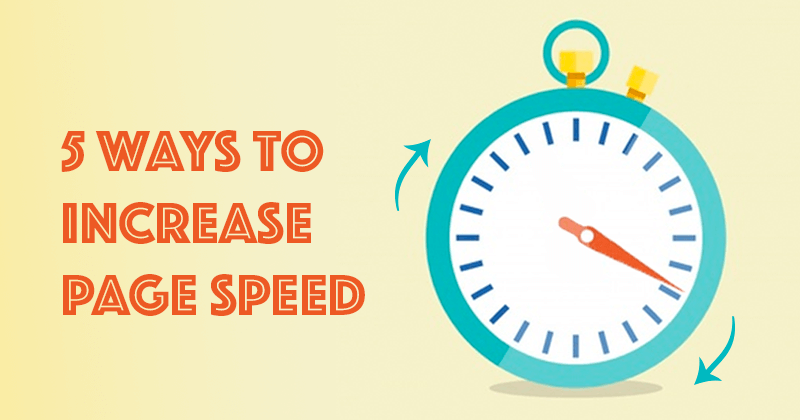5 Ways to Increase Page Speed

Page Speed is important. Slow-to-load pages will impact your bottom line far more than the time and cost to increase their speed. Having a page load—whether mobile or desktop versions of your website—in under 3 seconds is a must.
Don’t stop at 3 seconds though, if you can have every single page load in under 1 second that’s even better.
So, if you read my previous blog post on Why Page Speed is Important and took our advice, by now you might have run your website through Google’s Page Speed Insights. If your website didn’t score a perfect 100% then read on to see our tips for increasing page speed.
#1: Understand the Page Insights Results
Before you can fix something, it’s best to understand where the problem is. So, the first thing you should do, is to understand how Google determines the results that you receive and what your results are. Obviously, I’m unable to analyze your results, but I can give you some info on how Google determines those results. Once you analyze your site on Page Speed Insights, you’ll see that Google refers to the Chrome User Experience Report. This is field data that Google has gathered from key users across the public web about their web browsing experiences. So, your Page Speed score is based on how users interact with your site. If you see an ‘unavailable speed score’, it means that the Chrome User Experience Report doesn’t have enough data about your traffic. The insights report will also list many optimizations that you can do, most of which I’m covering in the rest of the tips below.
#2: Minimize Content
Yes, a website can have endless and endless information on pages. People are also capable of scrolling endlessness. But here’s the problem. They don’t want to. In fact, they just want to get what they want as fast as possible, especially on mobile. Review your content and analyze what’s really important. Do you really need all those videos, pdfs and images? It’s not that one or two paragraphs of copy will slow down your page load substantially, but too many images, too many file downloads can affect the page speed, but more importantly, it can affect the user experience and slow down the user (especially on mobile sites). So you should review the content as a whole and pare down the information to what’s really needed.
#3: Optimize Images, Minify CSS, JavaScript, HTML and other technical tricks
There are many different technical tricks that you can do which will decrease the page load time, such as:
- Optimize images by using the file size that you need, compress them for the web, and generally use JPGs over PNGs, which are better for photographs (PNGs are better for graphics).
- Optimize code, by Minify CSS, JavaScript and HTML.
- Remove render blocking JavaScript.
- Leverage browser caching.
- Minimize redirects because they make your page load slower.
- Review your server response time and fix any issues, such as slow routing or slow database inquiries.
#4: Use a Content Delivery Network
A Content Delivery Network allows many servers to share the load of delivering your website to the user. The end result is that users will have faster and more reliable access to your site.
#5: Implement AMP
AMP is a project by Google that gives users a faster experience on mobile. AMP stands for Accelerated Mobile Pages, and it works by taking away unnecessary content, leaving a bare-bones format that doesn’t take much time to load, therefore the user can just quickly swipe to the next page or the next article without waiting forever for it to load.
We know your time is precious, which is why you might not have the time to truly understand how Page Speed is impacting your business. We have the expertise, so Contact us. We can help.
